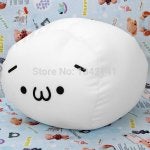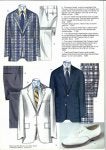I recently bought a few 60% cotton / 40% polyester shirts for exercising in, because I read that polyester is good for this purpose as it wicks moisture away from your skin. They are that "heather" type of blend where it has the main color of the shirt mixed in with some flecks of lighter shades.
I've noticed that they seem to be slightly "scratchier" than my usual 100% cotton shirts. Some colors are different too, for example the blue ones are scratchier than the green ones.
On the other hand, I'm not sure if this is just all in my head and I'm imagining it because I'm not used to the feel, as I've been wearing cotton all my life. Is it common for polyester blends to feel scratchier than pure cotton?
I've noticed that they seem to be slightly "scratchier" than my usual 100% cotton shirts. Some colors are different too, for example the blue ones are scratchier than the green ones.
On the other hand, I'm not sure if this is just all in my head and I'm imagining it because I'm not used to the feel, as I've been wearing cotton all my life. Is it common for polyester blends to feel scratchier than pure cotton?






